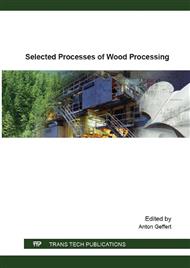p.138
p.145
p.153
p.160
p.167
p.175
p.182
p.190
p.195
Control of the Indoor Climate in Summer Using the Thermophysical Properties of Wood Materials in Terms of Transient Thermal State
Abstract:
The paper deals with the influence of wood-based thermal insulation in building envelope constructions to the summer comfort of indoor climate thorough their thermal accumulation properties. In this study, the optimum positions of thermal insulation (wood fibre insulation, cork board) were investigated numerically from the maximum decrement factor and the maximum time lag. Thermal mass material of the wall is formed from CLT (cross-laminated timber) with different thicknesses of layers. It depends on the position of the insulation material maintaining the total thickness of wall 240 mm. Totally, there were composed six different configurations of insulation placement with a consequent shift in its position. The calculations of decrement factor and time lag were carried out by computer simulations based on the particular configurations. In terms of decrement factor the most effective location of thermal insulation in two layers more precisely - in the middle of the wall and on the outer surface or on the outer surface and inner surface of the wall.
Info:
Periodical:
Pages:
167-174
Citation:
Online since:
April 2016
Authors:
Keywords:
Price:
Сopyright:
© 2016 Trans Tech Publications Ltd. All Rights Reserved
Share:
Citation:


